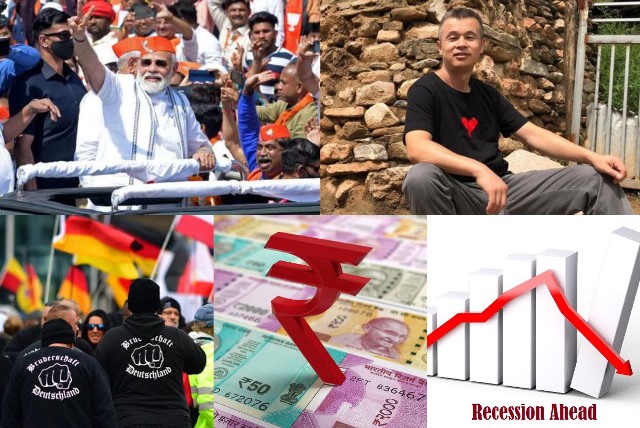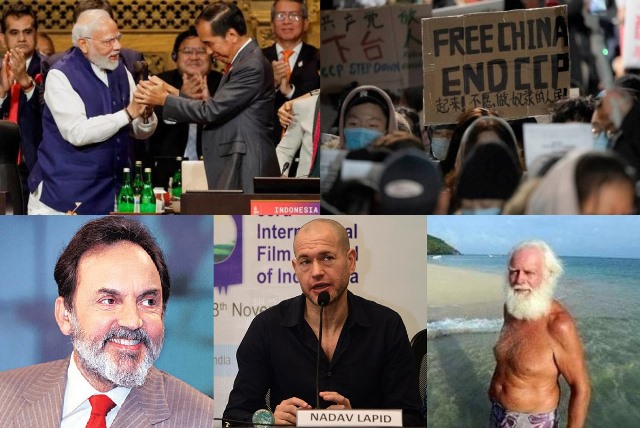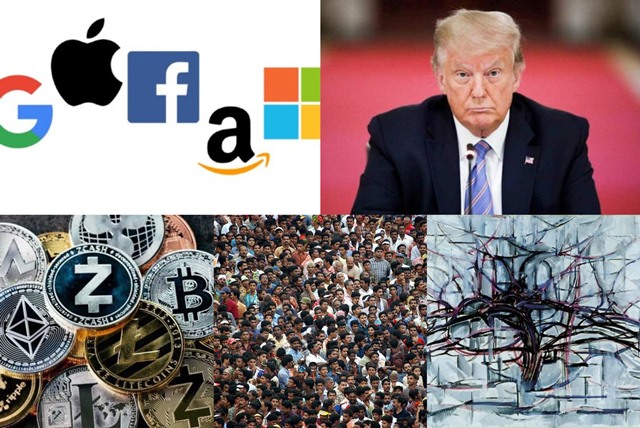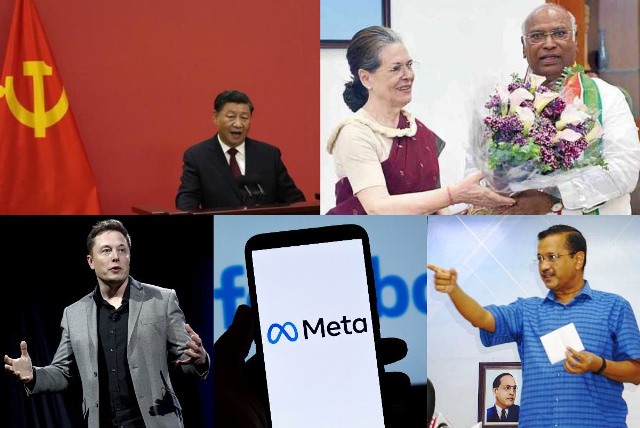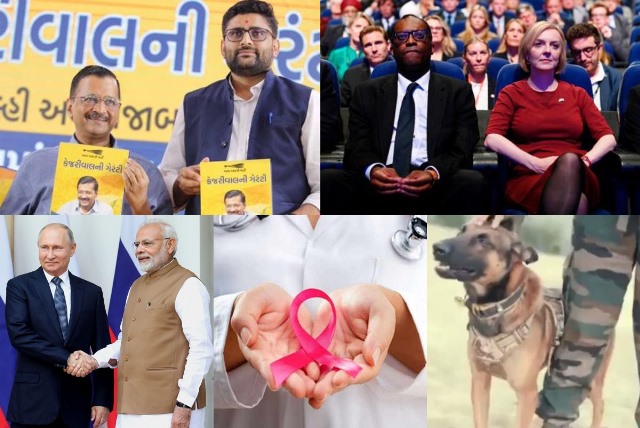What BJP’s victory in Gujarat means for Modi and his party
For many observers the Bharatiya Janata Party (BJP)’s sweeping victory in this month’s assembly elections in Gujarat was perhaps a foregone conclusion. The party won a record 156 of the182 seats in the state. It is the highest number of seats that any party has won in Gujarat’s electoral history ever since the state was created in 1960. The previous record for the highest tally was the 149 seats that the Congress won in the state in 1985.
By all reckoning, for the Congress that is ancient history. Since then, and more so since 1995, it has been a steady downhill journey for the Congress. In the latest elections, the Congress managed to win just 17 seats, down from 77 that it had won in 2017. As for the newest contender in Gujarat’s electoral politics, the Aam Aadmi Party (AAP), whose leader, Arvind Kejriwal, drove an energetic campaign in the state, managed to win just five seats.
What does this mean for the BJP? More importantly, what does it mean for Prime Minister Narendra Modi whose home state is Gujarat and who has been chief minister there for more than a dozen years?
A lot, it would appear. Winning in Gujarat for Modi and his party was non-negotiable. It had to happen and it did. Years of being in power in the state may have built up a fairly strong anti-incumbency sentiment among voters. It didn’t. A major disaster such as the collapse of the Morbi bridge that killed at least 135 people could have swung the sentiment among voters. It didn’t. The state has had an indifferent track record on administration and the fact that it has had chief ministers replaced at least twice during the previous term of the government could have affected voters’ decisions. They didn’t.
So what were the factors that led to the BJP’s impressive sweep in the 2022 elections in the state? First, it was the towering influence that Modi enjoys in the state. For Gujarat’s voters, it is Modi whom they see as their leader, their homegrown leader who now leads the country. Neither incumbent chief minister Bhupendra Patel nor any other BJP leader in the state really matters. In Gujarat, Modi appears to be the supreme leader who makes the difference for voters there.
Then, of course, it is the near-collapse of the electoral machinery of the Congress party in the state. The Congress is still coming to grips with its newly elected party leadership after Mallikarjun Kharge assumed charge as president of the party. Its local leaders in the state have not been consequential and, in general, at least in the run up to the recent elections, its eye has not been on the ball. Obviously, the collapse of its strongest political rival has helped the BJP.
The third factor, surprising as it may seem, which has helped the BJP is AAP’s entry into the fray. AAP’s vigorous (if less financially endowed) campaign focused on issues that affect the common man–education, free supply of electricity and water and so on–but it failed to wean voters away from the BJP. What it did, instead, was to cut into the vote shares of the Congress, hobbling the latter’s status as BJP’s prime challenger even further. So Kejriwal and his party really helped the BJP pull off its impressive victory. Ironic, isn’t it?
There was some consolation for the Congress, however. In Himachal Pradesh, where elections were held around the same time, the party won 40 of the 68 seats, ousting the incumbent BJP government. In the previous elections, the BJP had won 44 seats in the state.
What does the Congress’s victory in Himachal mean? For one, in that northern state since the early 1990s, the government has alternated between the BJP and the Congress–each ruling for a term till the other displaces it. In fact, since 1985, the state has usually voted out an incumbent government. So, the Congress’ victory could be seen as a continuation of the oscillating pattern.
Yet, it is also a morale booster for the Congress, which badly needs uppers and mood-lifters. It has seen a series of electoral debacles, exodus of leaders, and a general lack of cohesive direction in its political strategy.
Oh, and just in case you thought that the Congress had finally managed to sever its tether to the Nehru-Gandhi family, please note that last week after the Himachal Pradesh victory, its party leaders vied with each other to credit Priyanka Gandhi, the daughter of former president of the party Sonia Gandhi and the sibling of another former president of the party Rahul, for the victory in Himachal Pradesh. Amen!
China’s mysterious ‘Bridge Man’
The recent protests in China against draconian restrictions on civil rights and movement by individuals across several cities has been compared to the Tiananmen Square massacre of the late 1980s when the state’s military and security forces cracked down against pro-democracy protests. This time around the protests were against the government’s action and stipulations after a fresh wave of Covid infections took hold of many populous cities in the country.
Many of those restrictions have now been rolled back after popular protests locally and outrage that was sparked globally. But behind the protests was an individual who remains shrouded in mystery. In mid-October, a man known as Peng Lifa hung two banners over a busy highway crossing in Beijing that attacked China’s regime headed by president Xi Jingping. The banners variously had slogans such as “We want food, not Covid tests”; “We want reform, not Cultural Revolution”; “We want freedom, not lockdowns”; “We want votes, not a ruler”; “We want dignity, not lies”; and “We are citizens, not slaves.” One of the slogans also attacked Xi directly: “Remove the despotic traitor Xi Jinping!”
Predictably, the Chinese government reacted immediately. The banners were removed and Peng is believed to have been apprehended. But two months later when the first protests started spreading across China’s cities, it was these very slogans that Peng had hoisted that were adopted by the protestors. And Peng is considered by many Chinese citizens as the real hero of the protests.
But here is the sad part of the story. Peng, who is believed to be a techie with interests in physics and philosophy, has disappeared from public life and is likely in custody. His fate is unknown and most fear that the authorities may have taken severe action against him. In the hugely regulated media environment in China, however, he is celebrated and lauded as the “lone warrior”.
Germany busts a domestic terror group
Last week Germany busted a domestic terror group that is believed to have had plans to overthrow the government. The group, headed by a 71-year-old German aristocrat and including retired military personnel, and a former MP for the far-Right Alternative für Deutschland (AfD), was apparently planning a coup aimed at overthrowing the government and re-negotiating the terms of the post-second World War settlement.
The far-Right group had links to the QAnon, a conspiracy theory and cult that has emanated in the US and which believes that a cabal of Satanic and cannibalistic paedophiles conspired against the former US President Donald Trump during his term in office. In Germany, the QAnon has had an influence among the far-Right movement and among the Reichsbürger (or Citizens of the Reich) whose members deny the existence of Germany’s post-World War II federal republic. They believe that the current administration is still occupied and influenced by the Western powers that made up the allies–the US, UK, and France.
The busted group members are believed to belong to these and other groups and the authorities believe that they had plans for an alternative government and a strategy to infiltrate the defence forces. Many members of these groups have their own “passports” and “driver’s licences” and distribute and display other propaganda material. German intelligence agencies estimate that there could be around 21,000 members of the Reichsbürger in the country. The recent crackdown is proof that the government takes the threat seriously in an environment where across Europe there is a marked upsurge in ultra-Right wing movements.
A hint of good news for the Indian economy
Last week the World Bank had some good tidings for India’s economy. It revised upwards the estimate for its growth forecast of GDP growth for 2022-23. According to the revision, the GDP growth rate for the year now stands at 6.9% compared with October’s forecast of 6.5%. According to the Bank, India is well-positioned to fight off any global headwinds that might occur because of recessionary trends elsewhere in the world.
In particular, the Bank has upgraded its growth prediction for India on account of what it sees as strong private consumption and investment in the quarter-ending September performance.
The World Bank’s India Development Update report — Navigating the Storm — upgraded the country’s growth prediction on the basis of its September quarter performance “driven by strong private consumption and investment” that saw 6.3% growth in its GDP. This is significant because it comes at a time when the forecasts for most other economies in the world,especially in the west, have been quite dismal.
Warnings of the world’s worst recession
The encouraging forecast for India comes at a time when the world’s biggest asset management firm, Blackrock, has warned of a recession that could be worse than any that the world has seen before. According to a Blackrock forecast, a worldwide recession is imminent soon as central banks boost borrowing costs aggressively to tame inflation and this time, the firm feels it could lead to more intensive and widespread market turbulence across the globe.
According to the Blackrock report titled 2023 Global Outlook, the global economy has already come out of a 40-year period of stable growth and inflation and is now on the verge of entering a period of instability. This regime, marked by unpredictability, is expected to stay, according to Blackrock.
Moreover, the report has highlighted that policymakers will find it difficult to support markets the way they might have done in past recessions. BlackRock, founded in 1988, is the world’s largest asset manager, with US$10 trillion in assets under management as of January 2022.
